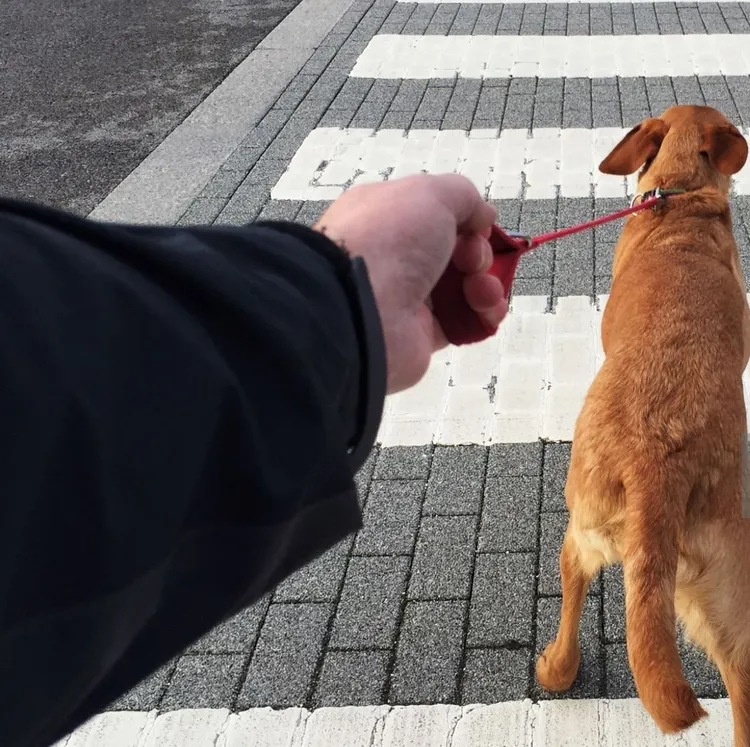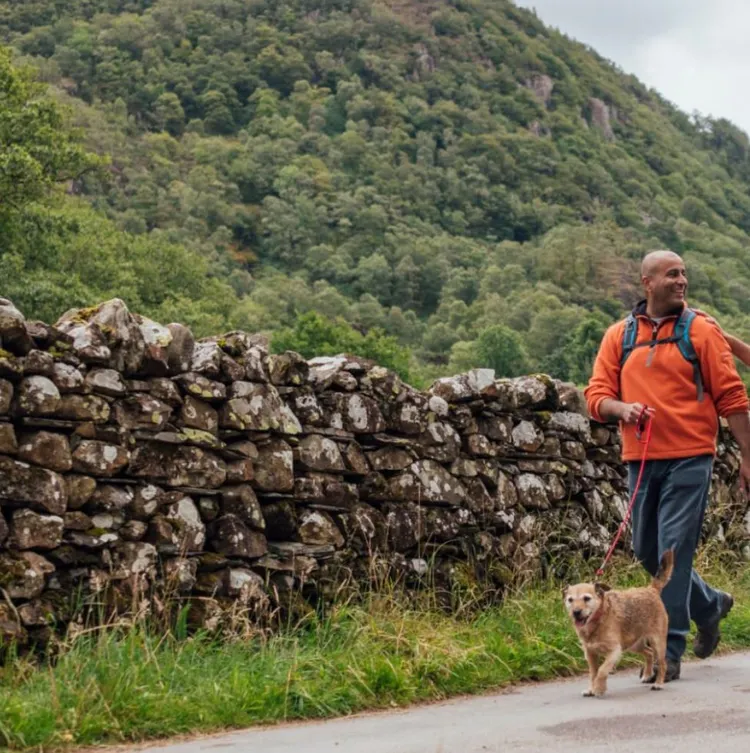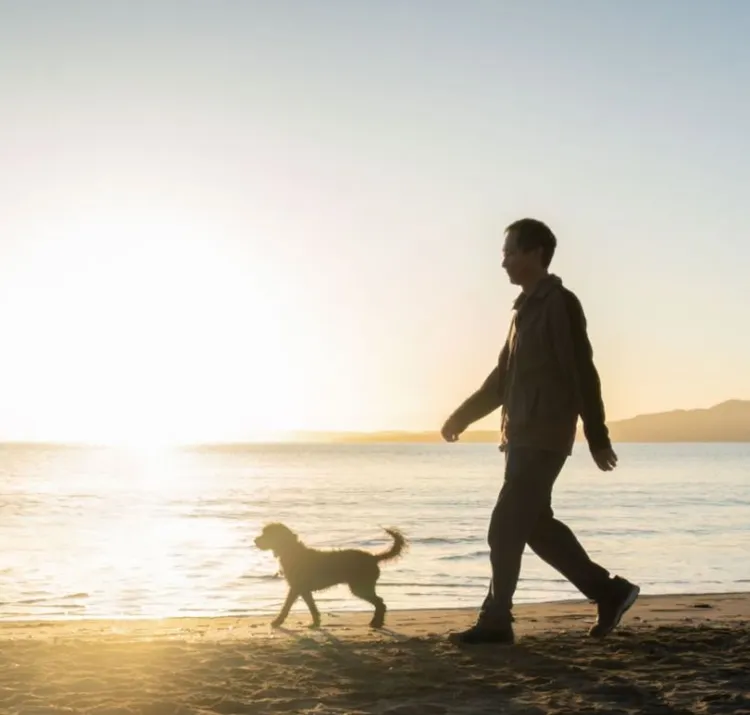Every wagging tail signals excitement at the word “walk,” but dog walks are more than just a daily chore—they’re the key to a happy, healthy pup! Walking your dog isn’t just beneficial for their physical well-being; it supports their mental health, socialization, and behavior. Moreover, by incorporating eco-friendly practices into your daily walks, you can reduce your environmental footprint while enhancing the walking experience for both you and your dog.
Let’s explore the many benefits of regular dog walks, tackle common challenges, and discuss eco-conscious practices to keep your walks both enjoyable and sustainable.
The Benefits of Daily Dog Walks
Regular walks are crucial for your dog’s health and happiness. Here are three key areas where walks make a significant impact:
1. Physical Exercise
Dogs need daily physical activity to maintain their cardiovascular health, muscle tone, and weight management. Regular walks help burn calories, reducing the risk of obesity and related health problems like diabetes and joint issues.
Benefits of Physical Exercise:
- Weight Management: Obesity is a common issue in dogs, and regular exercise is essential for maintaining a healthy weight.
- Joint and Bone Health: Exercise keeps joints flexible and strengthens muscles, reducing the risk of arthritis.
- Cardiovascular Health: Daily walks improve heart function, keeping your dog’s heart healthy.
How Much Exercise Does a Dog Need?
While every dog is different, most adult dogs need at least 30 to 60 minutes of moderate exercise per day. High-energy breeds or younger dogs may require more, while senior dogs or those with health issues might benefit from shorter, more frequent walks.
2. Mental Stimulation
Walks aren’t just about physical activity—dogs thrive on mental stimulation. Exploring new environments, encountering new smells, and engaging with different sounds and sights provide dogs with the mental exercise they need to stay sharp and satisfied.
Benefits of Mental Stimulation:
- Reduces Boredom: Walks allow dogs to experience new stimuli, which helps prevent boredom and restlessness.
- Encourages Exploration: Letting your dog sniff and explore their surroundings engages their natural curiosity.
- Enhances Training Opportunities: Walks provide the perfect setting for reinforcing commands and good behavior.
Dogs have a powerful sense of smell, and allowing them time to sniff their surroundings can be mentally enriching. It’s a great idea to let them indulge their curiosity by sniffing new areas and discovering different scents.
3. Behavior Improvement
Regular walks also contribute to better behavior. Dogs that don’t receive enough physical or mental exercise are more likely to develop destructive behaviors like chewing furniture, digging, or barking excessively. Walking helps release excess energy and reduces anxiety, which can prevent many behavioral issues.
How Walks Improve Behavior:
- Reduces Anxiety: Exercise reduces anxiety and helps alleviate behaviors associated with stress, such as pacing or barking.
- Prevents Destructive Habits: A tired dog is less likely to engage in destructive activities at home.
- Encourages Positive Socialization: Walks provide opportunities to meet other dogs and people, which can improve social skills and reduce reactivity.
Common Walking Challenges & How to Overcome Them
While walks are generally a positive experience, some common challenges may arise. Here’s how to handle them with ease:

1. Pulling on the Leash
A common issue for many dog owners is dogs that pull on the leash. This behavior often stems from excitement, lack of training, or a desire to explore faster than their human can walk.
Solutions:
- Loose-Leash Walking: Train your dog to walk politely by using the stop-and-go method. When your dog pulls, stop walking. Once they relax the tension on the leash, resume walking. Over time, your dog will learn that pulling slows down the walk.
- Positive Reinforcement: Reward your dog with treats or praise when they walk nicely without pulling.
2. Fear of the Outdoors
Some dogs may experience anxiety or fear during walks, particularly if they’re not used to the sights, sounds, or smells of outdoor environments.
Solutions:
- Gradual Exposure: Slowly expose your dog to new environments by starting with shorter, quieter walks and gradually increasing the time spent outdoors.
- Comforting Gear: Equip your dog with a comfortable, secure harness made from eco-friendly materials to help them feel safe and secure.
- Desensitization Training: Use treats and praise to create positive associations with new experiences during walks.
3. Reactive Behavior
Dogs that react aggressively or anxiously to other dogs, people, or distractions can make walks challenging.
Solutions:
- Distraction and Redirection: Bring along high-value treats and use them to redirect your dog’s attention away from potential triggers.
- Training Classes: Consider professional training to address reactivity issues. Look for positive reinforcement trainers who use humane, eco-conscious methods.
Eco-Friendly Tips for Dog Walks
Taking an eco-friendly approach to dog walks is easier than you might think. Here are some simple changes you can make to reduce your environmental impact:

1. Biodegradable Waste Bags
One of the easiest ways to go green on walks is by using biodegradable waste bags instead of traditional plastic bags. These bags break down more quickly and don’t contribute to long-term plastic pollution.
Look for waste bags made from materials like cornstarch or plant-based plastics. Many companies now offer biodegradable or compostable options that are just as durable and easy to use as regular plastic bags.
2. Sustainable Leashes and Harnesses
Opt for dog gear made from recycled or organic materials, such as leashes and harnesses crafted from recycled plastic, hemp, or organic cotton. These materials are not only durable and comfortable for your dog, but they also help reduce waste and minimize your carbon footprint.
3. Respect Nature
When walking in parks or natural areas, be mindful of the environment by sticking to designated paths and avoiding sensitive ecosystems. Always clean up after your dog, even in wild areas, as dog waste can harm local wildlife and water sources.
Additional Tips for Green Walks:
- Avoid Harsh Chemicals: Use non-toxic, biodegradable flea and tick preventatives to protect your dog and the environment.
- Eco-Friendly Water Bottles: Carry a reusable water bottle and a portable bowl for your dog to avoid using single-use plastic water bottles.
Making the Most of Your Walks
To keep your walks enjoyable and stimulating for your dog, consider adding variety and engaging in activities that go beyond simple exercise.
1. Vary Your Routes
Introducing new routes can make walks more exciting for your dog by exposing them to new smells, sights, and sounds. Try exploring different neighborhoods, parks, or nature trails to keep walks fresh and engaging.
2. Interactive Games
Incorporating interactive games into your walks can enhance the mental stimulation your dog receives. Play a game of fetch, practice recall commands, or encourage your dog to scent-track specific objects during the walk. These activities tap into your dog’s natural instincts and keep them mentally engaged.
3. Social Opportunities
Walks are an excellent opportunity to socialize your dog with other dogs and people. Proper socialization can reduce anxiety, reactivity, and fear of unfamiliar situations. Just be sure to introduce new social situations gradually and in a controlled manner to prevent overwhelm.
Conclusion
Dog walks are much more than a daily routine—they’re an opportunity to bond, explore, and improve your dog’s overall well-being. By providing your dog with regular walks, you’ll promote their physical health, mental sharpness, and behavior management. And by embracing eco-friendly practices such as using biodegradable waste bags and sustainable gear, you can make your walks better for the planet too.
With the right approach and a few simple adjustments, you can turn every dog walk into a rewarding experience for both you and your pup. So grab your leash, lace up your shoes, and get ready to enjoy the great outdoors with your best friend—while also doing your part to protect the environment!



